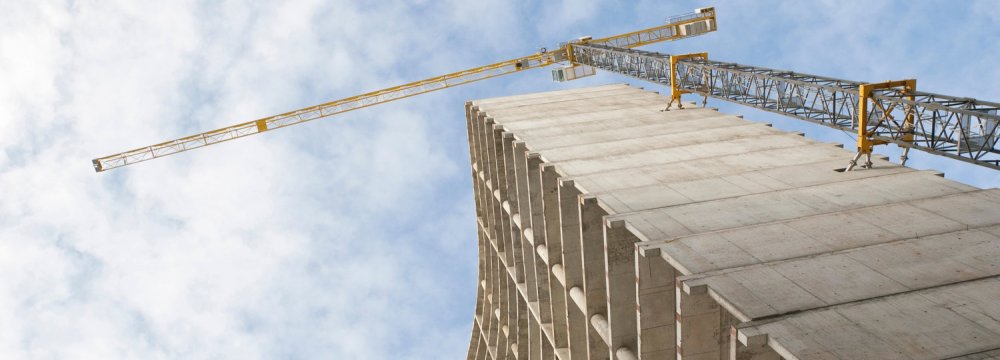Minister of Industries, Mining and Trade Mohammadreza Nematzadeh has called for the use of concrete instead of structural steel in building construction with the dual aim of boosting the structure’s safety as well as stimulating domestic demand for the struggling cement industry.
“The cement industry faces the double whammy of loss of export markets and slump in the construction sector,” he was quoted by ISNA as saying at the 16th International Building and Construction Industries Exhibition, Iran Confair 2016.
Concrete is a composite material composed of coarse aggregate bonded together with fluid cement which hardens over time. It is used more than any other manmade material in the world due to its durability.
Concrete buildings offer many safety advantages over steel skeleton structures. Compared to steel, concrete can endure very high temperatures for long periods and offers excellent protection from explosions. Concrete also provides good resistance against externally applied forces such as high winds, hurricanes, and tornadoes owing to its lateral stiffness, which results in minimal horizontal movement
Energy requirement for transportation of concrete is low because it is produced locally by local resources – typically manufactured within a few kilometers of the construction site. Similarly, relatively little energy is used in producing and combining the raw materials.
Building with concrete is also very fast. Unlike steel, it is possible for large sections to be pre-fabricated off site, significantly speeding up construction.
Concrete could also be reinforced with steel, creating a much more powerful structure. Concrete on its own has one major downfall. it is extremely strong in compression but has little to no strength when there is tension. Rebar is usually used within concrete to give it the ability to carry tensile loads on a structure.
The Iranian cement industry is stagnating. Weak domestic demand and loss of export destinations has led to an unwanted inventory of 16 million tons.
Replacement for Bitumen
In a meeting last week, it was suggested that cement be used instead of bitumen in road and pavement construction in a bid to extricate the industry out of the present slumber.
According to Mohammad Atabak, head of Iran Cement Employers Association, the proposed replacement is justified as bitumen can be more easily exported. Furthermore, concrete surfaces are stronger and more durable than asphalt. They can be grooved to provide a durable skid-resistant surface
Nematzadeh has issued a directive to ban new cement and steel production plants as current production capacity far exceeds demand. The only exception to the measure related to plants that will be built in close proximity to ample water resources and be able to export.
Following the loss of the Iraqi market k in April, which was once the main destination for the bulk of Iran’s surplus cement, domestic producers have been hunting for new export markets. In response, the government has recently allocated $285.7 million in subsidies for transporting cement to new markets, such as Africa.
Several agreements with African countries have been signed and two cargos have been exported to Tanzania and Egypt. Furthermore, cement producers have signed a deal with Haiti for exporting to the Caribbean country and are also eying Russia and Central Asian markets, according to the CEA chief.
Plunging production led to a fall in Iran’s global ranking as the country fell three points lower in 2015 compared to the previous year’s 4th position among top cement producers.
Iran’s 2015 cement output stood at 58.6 million tons, down 12% from the year before, according to CEA data. Last year’s exports were also hit, falling 20% compared to the prior year.
Iran Confair 2016 opened at the Permanent International Exhibition Fairgrounds in Tehran on August 12.
An estimated 800 Iranian and 300 foreign companies from Belgium, China, France, Germany, Hungary, Italy, South Korea, South Africa, Spain, Taiwan, Russia, Turkey, Switzerland, the UK, Austria, Denmark, Japan, the Netherlands, Norway, Finland and the US are attending the four-day event.
The exhibition has been organized with the aim of introducing Iran’s capabilities, transferring technology to and from the country as well as meeting the domestic need for raw materials.





